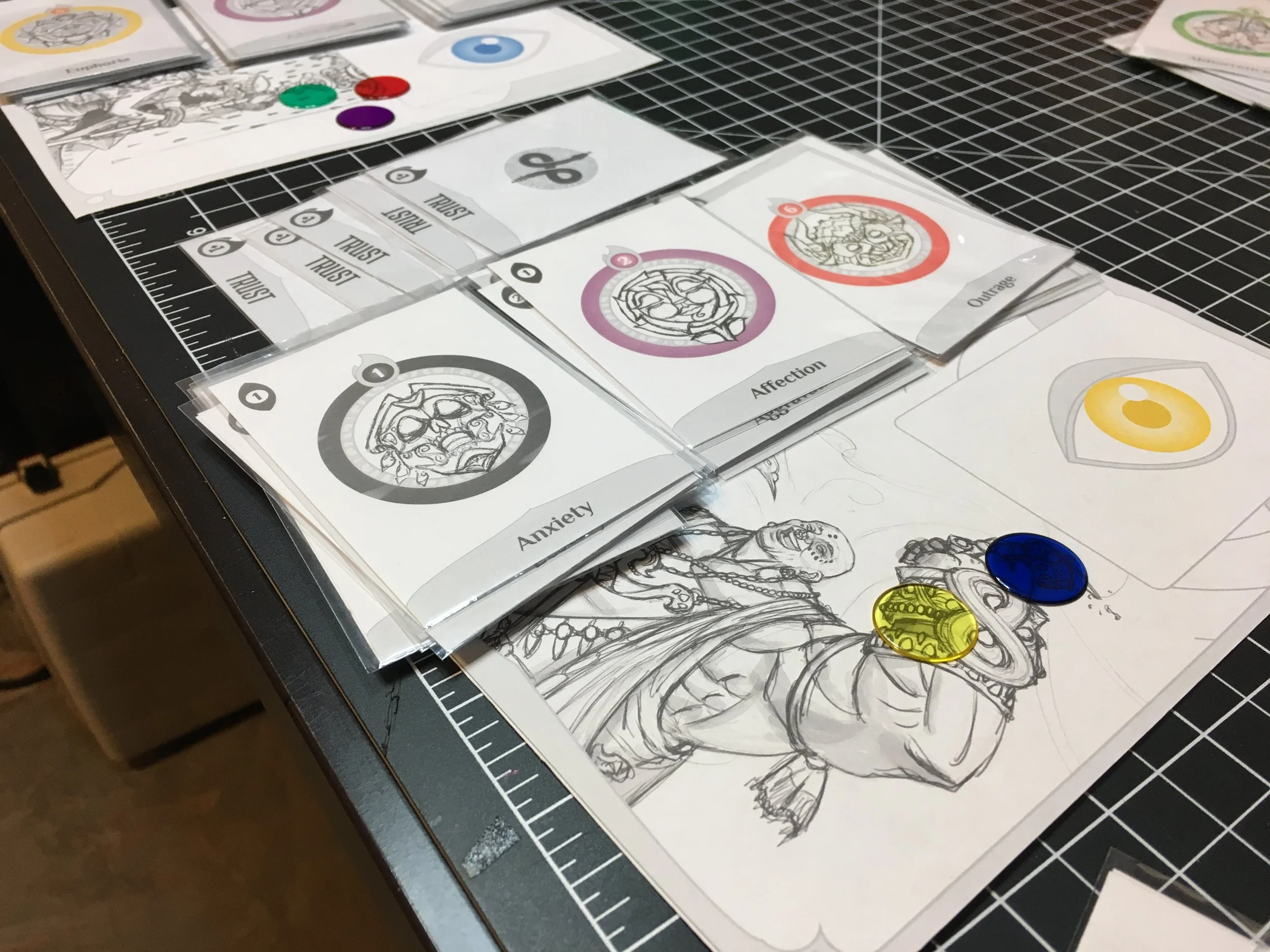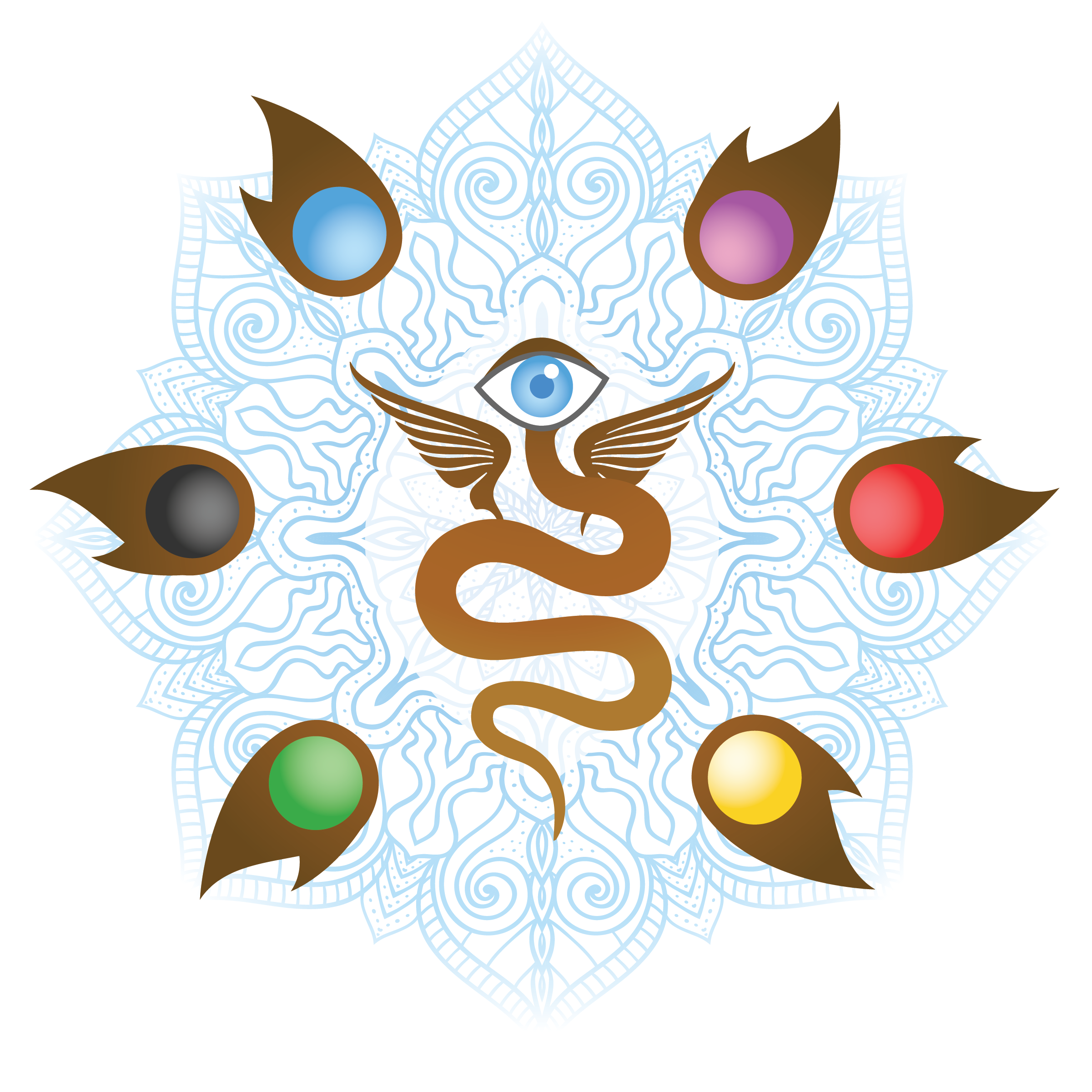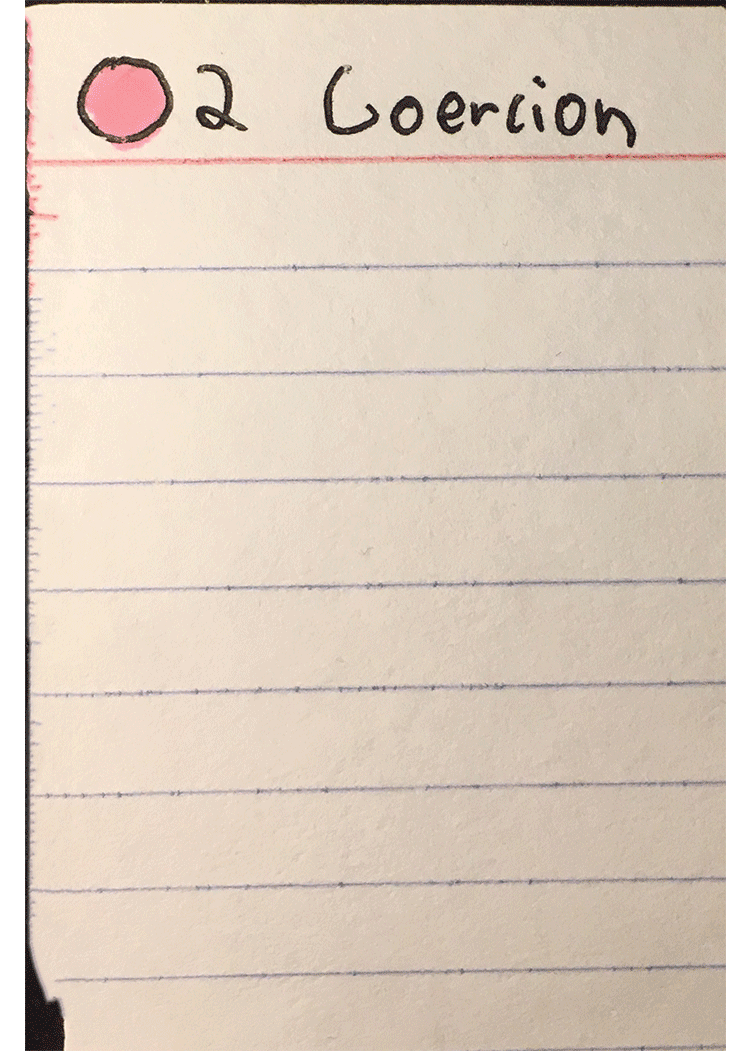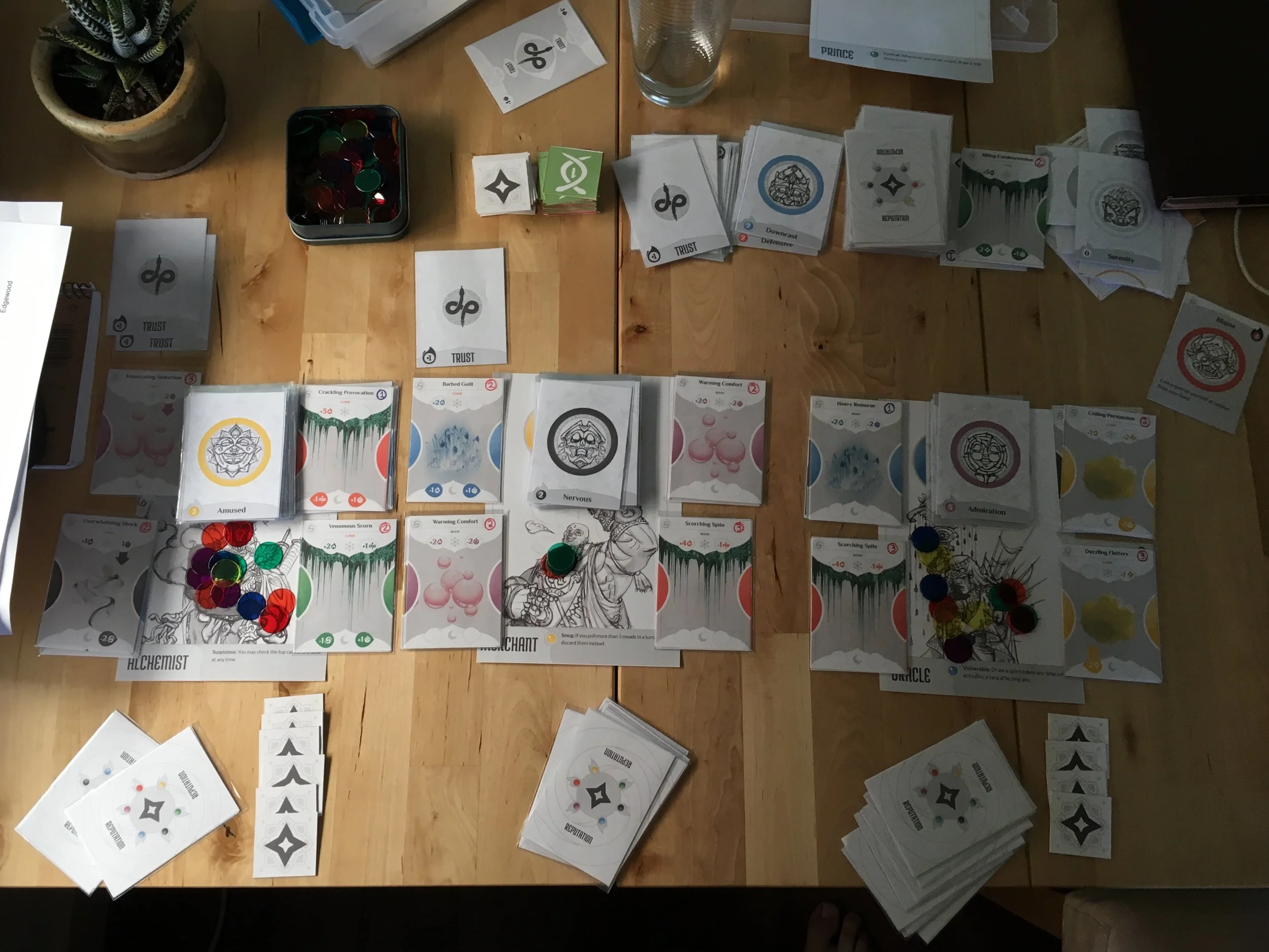Inner Path – A Journey of Self-discovery
The latest version splits a mystic’s mood into a set of 3 emotions, granting greater flexibility in casting requirements and bringing the right level of complexity to the system.
Gameplay Overview
In this predominantly card-based game, players cast spell cards to give themselves advantages and cut away their mood set to uncover their buried inner eye, in an effort to become the first to achieve enlightened peace.
Objective
The idea was to try to capture the psychological experience of navigating the push and pull of relationships, the emotional motivators of others, and the methods individuals use to attempt to give themselves peace of mind.
Psychology and Mysticism under one roof, ideally can teach us something about ourselves.
Inspiration
The metaphor of ‘rasa’ magic applied to the experience comes from its definition of ‘that which colours the mind’. The concept was borrowed from classical indian music, where the same composition can be played in different scales to paint a variety of different emotional states on the minds of the audience.
Research
Exploration into commonalities of meditation in eastern mysticism and mindfulness in psychological therapy techniques helped lay the groundwork of the game flow.
Generating new mechanics came from playing a diversity of other games and teasing out novel interactions. Trying on different conceptual frameworks to rethink the structure of the game also helped it evolve from earlier crude stages.
The evolution of the humble spell card through far too many iterations…
Development
I started with a suit matching mechanic that helped drive an engine focused on card movement instead of number crunching. Each iteration revealed new complexities with discarding cards to ‘uncover’ progression in a subtractive model, running against the grain of traditional ‘take that’ style competitive games.
Shifting the goal of the game from manipulating others as an emotional release valve to an individualized process of self-healing helped develop the mental map of physically removing cards from the ‘inner eye’ on the character mat.
Static spells were ‘activated’ by matching mood colours, resulting in a huge cognitive load and busy game board.
One version tried to introduce the concept of the ‘prisoner’s dilemma’ where players with competing reputation gambled in trusting or betraying one another.
Reducing components lead to a focus on spells only.
Some versions had a proliferation of components that made the game... complex.
Experimenting with a focus tracker and dice-based meditation system made the central mechanic overly burdensome.
User Testing
Testing from the very beginning with crude paper prototypes, I felt it best to hash out experimental ideas with live test subjects. Throughout I would oscillate between pushing ideas out to strangers immediately to get unfiltered feedback, and validating ideas in progressively evolving circles from myself, to friends/family, acquaintances etc. so as not to frustrate new users with incomplete mechanics.
Ongoing Progress
One of the biggest gameplay challenges has been the frequency of potential colour matches to serve as prerequisite to playing spell enhancement cards. Various actions were introduced as mechanisms to filter mood colours, such as ‘lashing out’ with mood cards to pass them onto opponents, or ‘building trust’ to shift them into defensive pieces. Combined with the action of ‘meditation’ for releasing swaths of cards, these have become important core functions to centre the interactions around.
Through constant testing I am continually learning which mechanics to keep that are core to the theme, and which can be revised or removed if they don’t serve the overall theme experience. By questioning even the base features, I was able to shift the singular ‘mood stack’ into a set of 3, which finally provided the right combination of colour options to provide a more diverse and nuanced resource engine, as well as more gradual and meaningful progression throughout the game.
The prototype continues to evolve; as revisions become less dramatic I hope to begin development of high fidelity assets when moving into a testing phase focused on balancing and refinement.











